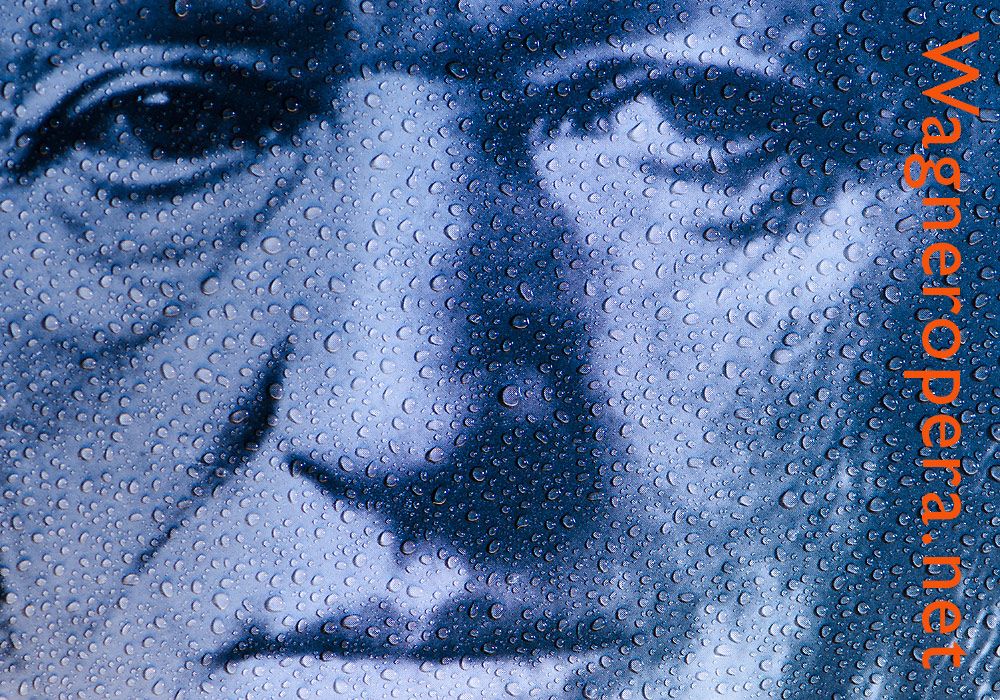Richard Wagner (1813–1883) - a biographical sketch

In 1813 Richard Wagner is born in the Jewish quarter of Leipzig, the Brühl, at the Red and White Lion house. Whether his father was the police actuary Carl Friedrich Wagner or the actor and painter Ludwig Geyer has never been conclusively established. Wagner himself was not sure, though neither man, contrary to insinuations by Nietzsche and others, was Jewish. Wagner’s mother, for her part, was not the illegitimate daughter of Prince Constantin of Saxe-Weimar, as she led people to believe, but a humble baker’s daughter who was seduced by the prince.
Having left the Nicolaischule in Leipzig the previous year and enrolled at the Thomasschule, he matriculates on 23 February 1831 at Leipzig University. From this period also date the Seven Pieces for Goethe’s Faust, for voice and piano, including a piece in the unusual genre of melodrama, and a Piano Sonata in B flat for four hands. After starting with a new teacher, Christian Theodor Weinlig, in the autumn, he composes the solo Piano Sonata in B flat (published as op.1) and a Fantasia, also for piano.
1836: Premiere of Das Liebesverbot
Premiere of Das Liebesverbot, written the previous year, by the Bethmann company, of which Wagner is musical director. The company subsequently goes bankrupt. Wagner has meanwhile fallen in love with one of the company’s leading ladies, an attractive actress called Minna Planer. Before long, she has given him ‘a couple of moments of sensual transfiguration’, as Wagner euphemistically puts it in a letter to a friend. In July of this year he follows her to Königsberg, where she has another engagement. They marry on 24 November in the little church at Königsberg-Tragheim, deterred neither by their furious squabble, interrupted by the officiating priest, the day before, nor by the fact that Minna has a daughter, Natalie, following her seduction as a fifteen-year-old by a guards captain.
Premiere of Der fliegende Holländer (1843)
Following the successful premiere of Der fliegende Holländer on 2 January 1843, he is offered, and accepts, the post of Kapellmeister to the royal Saxon court in Dresden. He completes the poem of Tannhäuser in April and in the summer begins work on the music. In July he conducts his Das Liebesmahl der Apostel (The Love-Feast of the Apostles), featuring a vast chorus of 1,200 amateur singers and an orchestra of 100 gathered in Dresden’s Frauenkirche, in whose galleries the singers are arranged.
1848: Lohengrin and the libretto Siegfrieds Tod
He completes the score of Lohengrin in April 1848. Following uprisings in Paris and Vienna, a German National Assembly convenes in Frankfurt. Wagner delivers an address to the republican Vaterlandsverein, published the following day as ‘How do Republican Endeavours Stand in Relation to the Monarchy?’ In October he sketches an initial outline for a drama under the title ‘The Nibelung Myth: as Sketch for a Drama’, followed by a libretto for an opera called Siegfrieds Tod (Siegfried’s Death). The project is later to expand into the nearly 15-hour tetralogy Der Ring des Nibelungen spread over four evenings.
1853: Mathilde Wesendonck and Cosima Liszt
Having become embroiled in the revolutionary activity in Dresden, Wagner has been living in exile in Switzerland since 1849. He now publishes fifty copies of his completed Ring poem and reads it to an invited audience at the Hôtel Baur au Lac in Zurich. He moves with Minna into a larger apartment but is already in love with Mathilde Wesendonck, the wife of a wealthy patron who shares Wagner’s passion for silk, having made his fortune out of it. In October he meets the 15-year-old Cosima Liszt, later to be his wife. The following month he begins composition of the Ring, a project which is to occupy him for a quarter of a century.
1862: The poem of Die Meistersinger von Nürnberg
The poem of Die Meistersinger von Nürnberg is completed (the full score of the work was finally finished in 1868). Following a partial amnesty in 1860, he is now allowed to re-enter Saxony, but has no wish permanently to return to Dresden. He is attracted by Mathilde Maier and the actress Friederike Meyer. Hans and Cosima von Bülow (having married in 1857) visit Wagner in Biebrich. He coaches Ludwig Schnorr von Carolsfeld and his wife Malvina in the roles of Tristan and Isolde, the music of which had been written between 1857 and 1859.
King Ludwig II of Bavaria
In 1864 Mounting debts force Wagner to leave his apartment in Penzing, near Vienna, in which every room had been decked out in a riot of silk, velvet or damask. The 18-year-old who becomes King Ludwig II of Bavaria on 10 March is happily a Wagner enthusiast. He summons the composer, pays off his debts and houses him near the royal castle Schloss Berg, overlooking Lake Starnberg, near Munich. Cosima arrives at Starnberg with two daughters by Bülow and her burgeoning relationship with Wagner is finally consummated. Their first child, Isolde, is born the following April.
Die Meistersinger von Nürnberg
Die Meistersinger von Nürnberg receives its triumphant premiere in Munich under Bülow. In November Wagner meets the philosopher Friedrich Nietzsche, a fervent admirer who in due course is to become his sharpest critic. Cosima, together with Isolde and a second daughter of Wagner’s, Eva, move into the house Tribschen, on Lake Lucerne, chosen as their home two years previously.
1870: Bayreuth
The Upper Franconian town of Bayreuth is considered as a venue for the festival to mount the Ring. In August Wagner and Cosima marry in the Protestant church in Lucerne. The Siegfried Idyll is performed on the staircase at Tribschen in honour of Cosima’s birthday.
1876: The World Premiere of Der Ring des Nibelungen

The first production of the Ring in Wagner's purpose-built theatre in Bayreuth. The performance is attended by luminaries and musicians from all over Europe. An intimate and clandestine correspondence (and possibly love affair) with the French writer and Wagner-admirer Judith Gautier begins and continues until February 1878, when Cosima, having recently discovered the truth, resolutely brings it to an end.
The exotic garden of the Palazzo Rufolo at Ravello
In 1880 Wagner and family take up residence in the Villa d’Angri, overlooking the Bay of Naples, where they are joined by Paul von Joukowsky, the future stage designer for Parsifal. The Moorish-style castle and exotic garden of the Palazzo Rufolo at Ravello provide the model for the stage setting of Act II of that work: ‘Klingsor’s magic garden is found!’, Wagner writes in the visitors’ book. The cathedral in Siena similarly provides the inspiration for the Hall of the Grail. Wagner conducts a private performance for King Ludwig of the Parsifal Prelude in the Court Theatre in Munich. Last meeting with the king, after which he returns to Bayreuth.
1882: The World premiere of Parsifal
The premiere of Parsifal was given in the Bayreuth Festspielhaus on 26 July 1882 conducted by the Jewish-German conductor Hermann Levi. Stage designs were by Max Brückner and Paul von Joukowsky, who took their lead from Wagner himself. The Grail hall was based on the interior of Siena Cathedral which Wagner had visited in 1880, while Klingsor's magic garden was modelled on those at the Palazzo Rufolo in Ravello.[
1883: Richard Wagner dies
In 1883 Richard Wagner dies in Venice; his body is brought back by gondola and train to Bayreuth, where he is buried in a grave behind his house, Wahnfried. His widow, Cosima, takes over as director of the Bayreuth Festival, committed to a faithful execution of her husband’s wishes, as she understands them, but ossifying the festival in the process.
Thanks to Barry Millington for generous contributions!
Wagner on discovering Beethoven
“Another work also exercised a great fascination over me, namely, the overture to Fidelio in E major, the introduction to which affected me deeply. I asked my sisters about Beethoven, and learned that the news of his death had just arrived. Obsessed as I still was by the terrible grief caused by Weber's death, this fresh loss, due to the decease of this great master of melody, who had only just entered my life, filled me with strange anguish, a feeling nearly akin to my childish dread of the ghostly fifths on the violin. It was now Beethoven's music that I longed to know more thoroughly; I came to Leipzig, and found his music to Egmont on the piano at my sister Louisa's. After that I tried to get hold of his sonatas. At last, at a concert at the Gewandthaus, I heard one of the master's symphonies for the first time; it was the Symphony in A major. The effect on me was indescribable. To this must be added the impression produced on me by Beethoven's features, which I saw in the lithographs that were circulated everywhere at that time, and by the fact that he was deaf, and lived a quiet secluded life. I soon conceived an image of him in my mind as a sublime and unique supernatural being, with whom none could compare. This image was associated in my brain with that of Shakespeare; in ecstatic dreams I met both of them, saw and spoke to them, and on awakening found myself bathed in tears.”
(My Life)



